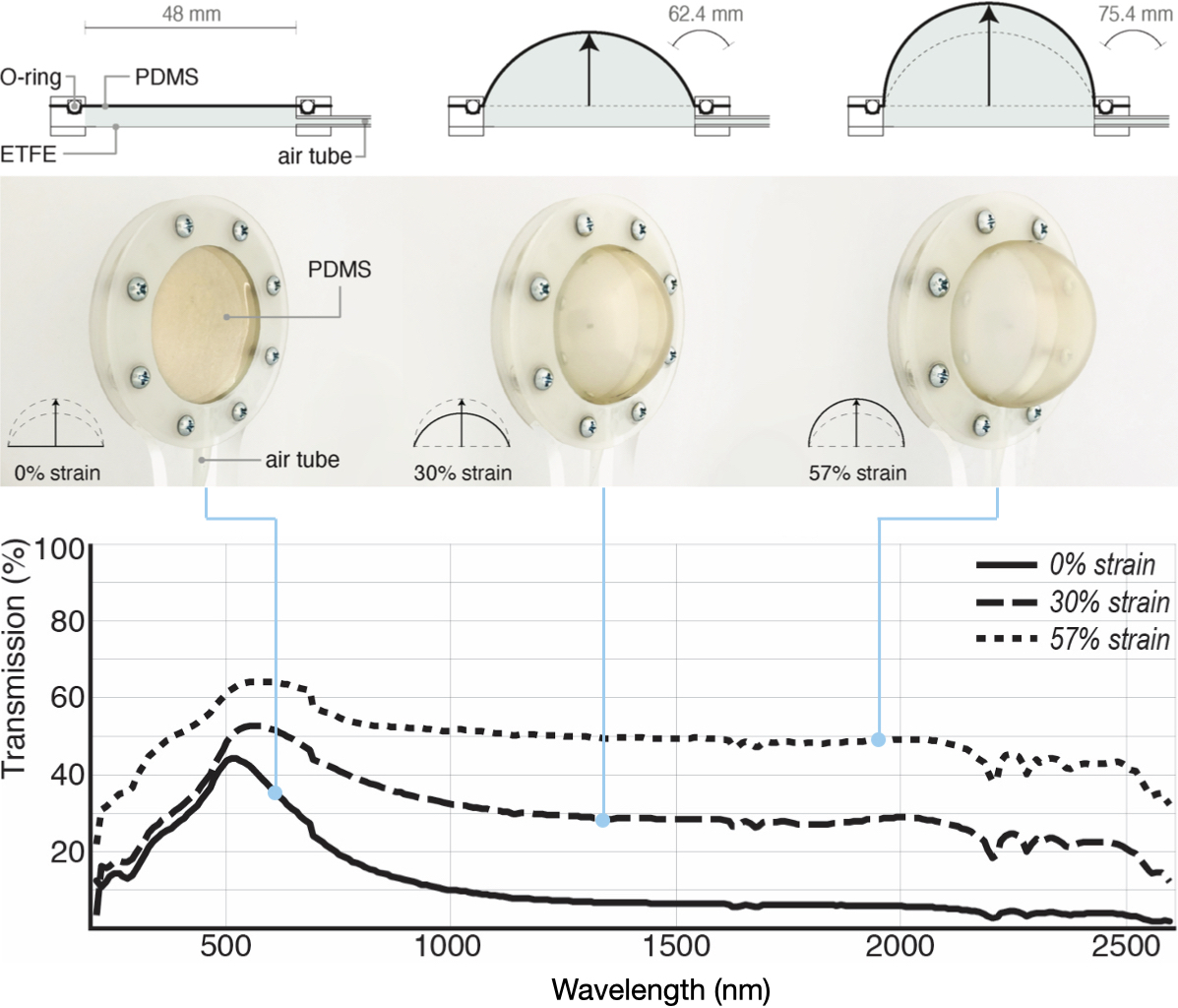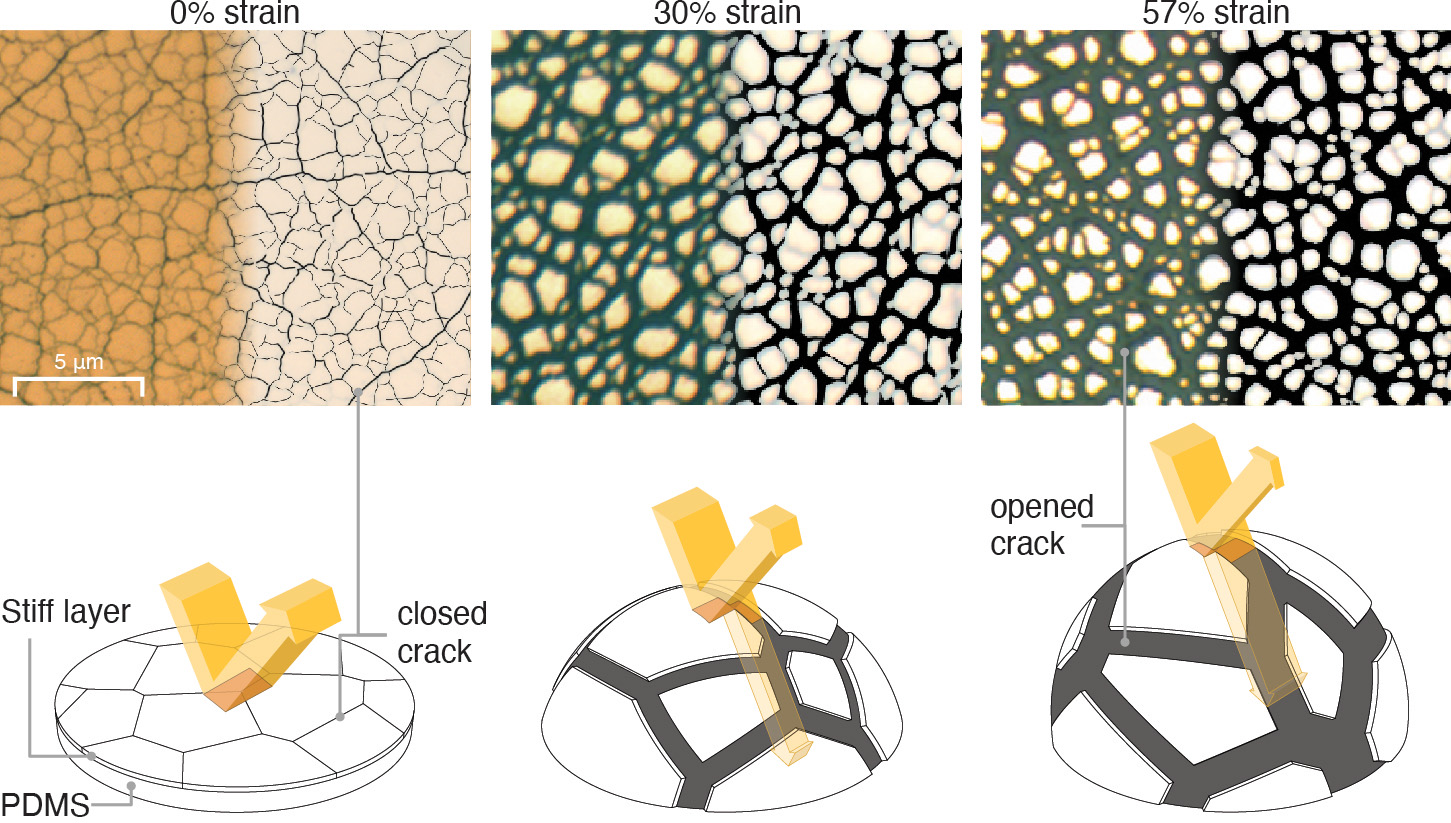TUNABLE INFRARED TRANSMISSION
2020
Thermal regulation of buildings in climates with daily and seasonal weather changes can prove challenging and result in high building energy consumption. While adaptable facades with tunable infrared transmitting properties could modulate solar transmittance through the building envelope and, as such, increase energy efficiency, available technologies to meet these needs are often expensive, relatively complicated, and challenging to implement in a lightweight form factor. Motivated by these limitations, we developed a novel tunable light-modulating technology for energy-efficient pneumatic facades in the form of polydimethylsiloxane (PDMS) film with a thin gold surface coating.
Sequential stretching and relaxing of this film results in strain-induced microscale surface cracks that can significantly modulate both visible and near infrared light transmission, and consequently, the material's solar heat gain coefficient (SHGC).
Surface cracks in actuated (i.e., strained) gold-coated PDMS films form in an island-like pattern over the entire film surface, with increased crack widths with increased strains. The larger the crack surface area, the greater the transmission of visible light and infrared radiation.
The material is slightly tinted and becomes lighter upon pneumatic actuation, and maintains acceptable optical clarity at any actuation strain. This technology's ability to regulate infrared transmission but maintain a clear view to the out-of-doors is highly advantageous in building facades.
The presented infrared-regulating gold-coated PDMS films can be easily integrated into ETFE facade systems both during new construction and in retrofits. The infrared-regulating PDMS film is simply applied as a third layer between two outer ETFE layers. The smart integrated facade system and its rapid actuation allows the proposed facade assembly to accommodate for seasonal, daily, hourly, and even real-time changes in solar intensity, exterior temperature, and internal heat gain. Building energy simulations have shown that significant potential of the material's tunability to reduce building energy use.
Attribution
Team: Lara Tomholt, Olga Geletina, Jack Alvarenga, Anna Shneidman, James Weaver,
Matheus Fernandes, Santiago Mota, Martin Bechthold, and Joanna Aizenberg
Harvard Graduate School of Design
Harvard John A. Paulson School of Engineering and Applied Sciences
Wyss Institute for Biologically Inspired Engineering at Harvard University
Publication
L. Tomholt, O. Geletina, J. Alvarenga, A.V. Shneidman, J.C. Weaver, M.C. Fernandes, S.A. Mota, M. Bechthold, J. Aizenberg (2020) Tunable infrared transmission for energy-efficient pneumatic building façades. Energy and Buildings, 226, 110377. https://doi.org/10.1016/j.enbuild.2020.110377



